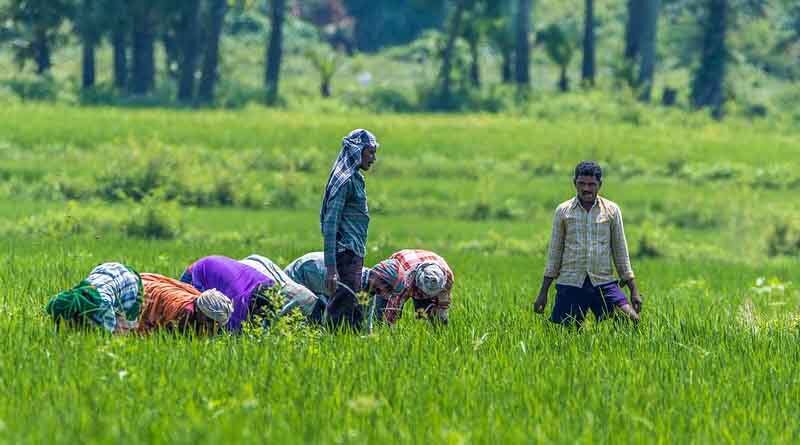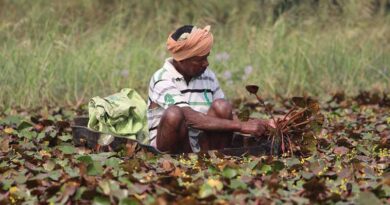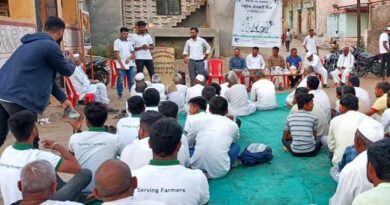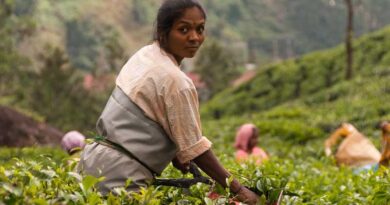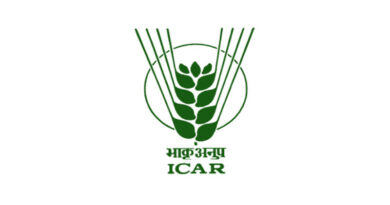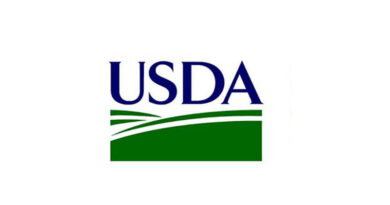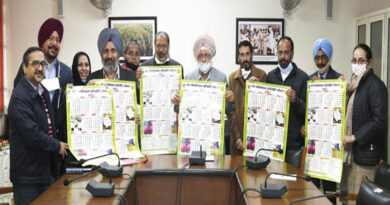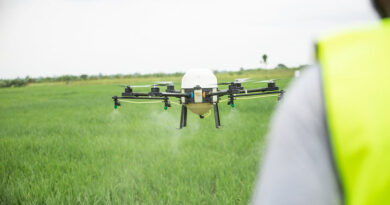Good Agricultural Practices for Sustainable Farm Profitability
Guest Author: Dr. Suseelendra Desai, Dean of School of Agricultural Sciences and Technology, NMIMS Shirpur
09 August 2022, New Delhi: The industrial revolution provided many chemicals for enhanced farm productivity to meet global food demands. However, their misuse and abuse adversely impacted the ecological balance leading to grave concerns about human health and welfare of the animals and workers.

According to the FAO of the UN, GAP is a science-driven application of available knowledge to address environmental, economic, and social sustainability aspects of on-farm and post-production processes for safe and healthy agricultural products. GAP targets the quality and safety of the food consumed, health and welfare of the workers’ and animals; socio-economics and ecological balance. The four pillars of GAP are Food quality and safety; Economic viability; Environmental stability; and Social acceptability.
The important elements of GAP are i) critical control points; ii) risk assessment; iii) traceability; iv) documentation and record-keeping; v) communication continuity and stakeholder awareness building; vi) regular monitoring of pre-production, production and post-production activities; vii) worker and animal health and safety; viii) independent third party audits; ix) oversight and enforcement and x) environment issues.
History & Spread of GAP
To address the rising concerns about the food-related quality and safety, British retailers started a network ‘Euro-Retailer Produce Working Group’ in 1997 and came up with EurepGAP to set standards for the certification of agricultural products. It is a private B2B setup to certify different agricultural commodities produced. The GAP standards include use of certified inputs; all the farming activities during and post-production.
The certification is carried out by independent and accredited bodies spread across the world through rigorous scheduled and unscheduled inspections and documentation. The Codex Alimentarius Commission (CODEX) is the international food standards setting body of the FAO and WHO. It develops international food standards, guidelines and codes of practice for an international food code that contributes to the safety, quality and fairness of food trade.
Successful execution of EurepGAP as a harmonized certification and spread beyond Europe prompted its renaming as GlobalGAP in 2007. Currently producers across 134 countries are registered with GlobalGAP. This success prompted food industries, producer organizations and even Governments to develop regional GAPs for a range of commodities such as ASEAN GAP, SAARC GAP and national GAPs such as USDA GAP & GHP, Japan (JGAP), Thailand (ThaiGAP), and Malaysia (MyGAP), Indonesia (IndoGAP), Taiwan (TGAP), India (IndGAP), ChinaGAP, Vietnam (VietGAP), the Philippines (PhilGAP), etc.
IndGAP
IndGAP was developed in line with the GlobalGAP to cover all agricultural farm produce and agro-biodiversity. It focuses on the quality and quantity of the produce, pre and post-harvest practices including worker’s safety, promote eco-friendly farming practices, safe and sustained supply of produce and develop niche markets. An IndGAP license may be obtained by individuals or groups of producers. Three types of GAP licenses are awarded based on compliance of major and minor requirements.
Current limitations of GAP
The concept of GAP needs a thorough understanding of the GAP requirements vis-à-vis food safety and quality. However, due to the large extent of illiteracy, most of the farmers are unaware of the safety, environmental and social impacts of the agricultural practices followed by them.
The other limitations include lack of incentives and motivation; poorly-regulated marketing system with no direct links with markets; absence of farmer networks; unhygienic production and processing practices; shortage of skilled labour; lack of communication and coordination of the producer-processor-policy maker- extension agency chain; and inappropriate use of chemicals.
Often farmers feel that GAP implementation, especially record keeping and certification will increase production costs. GAP can also alter the supplier-buyer relations through competing interests of specific stakeholders. Poor hand-holding of the small holder heterogeneity is leading to losing international markets. The monsoon dependence of Indian agriculture might result in long-term compliance barriers.
The way forward
System approach vs commodity approach: Indian agriculture spreads across 127 diverse agroecologies with ample scope for sustainable livelihoods by implementing GAP. GAPs may be applied to a wide range of farming systems and at different scales. However, most of the GAPs are commodity-oriented while agriculture and allied sectors are system-oriented. A systems approach in GAP will help to minimize the documentation & audit costs and enhance profitability.
Dynamic updation of GAPs: Currently, GAPs are updated only on need basis. There should be a mechanism to incorporate new science into GAPs to make them dynamic. The research organizations and institutions of higher learning should be networked in each agro-ecology for this purpose.
Incentivizing the GAP stakeholders: Providing incentives to the farmers adopting GAP will motivate others to join the same. For instance, USDA covers costs for GAP audits up to USD 2000. In India, certification services are provided for organic production. However, similar services could be extended for GAP audits and certification.
Awareness building and networking of farmers: The extension agencies must handhold the stakeholders for smooth implementation of GAP. Like in the USA, integration of GAP and GHP for the production systems will increase food safety, economic viability, and reduce costs of certification. As 85% of the farmers are small and marginal, networking them into natural groups like SHGs to reduce costs of certification and ensure assured supply.
Promotion of FPCs supported by cost accountants and business managers is essential as farmers are often good at only production chain management. Imparting new knowledge is key for success of GAP implementation. The NeGP mission mode project service 3 of the Ministry of Agriculture and Farmers’ Welfare, Government of India envisages to provide information on GAP using ICT and farm advisory services. This project involves 21 Central agencies, 10 state level agencies, 3 district level bogies and 6 NGO level agencies. When implemented as envisaged, the project will have all necessary set up and information for GAP.
Standards for microbial hazards: Microbiological hazards associated with food production and distribution is a major concern and calls for vulnerability based standard setting to ensure safety. Food Safety and Standards Authority of India can be an active player as it is the nodal agency to develop safety standards for microbiological hazards in the food chain.
Research support: Scientifically-sound GAPs could be timely and beneficial when they are backstopped by research programmes. HACCP-based specific research programmes have to be supported by the public and private bodies to generate viable solutions. Funding to maintain common databases on integrated production techniques for each of the major agro-ecologies will help to collect, analyse and disseminate information of good practices in relevant geographical contexts.

